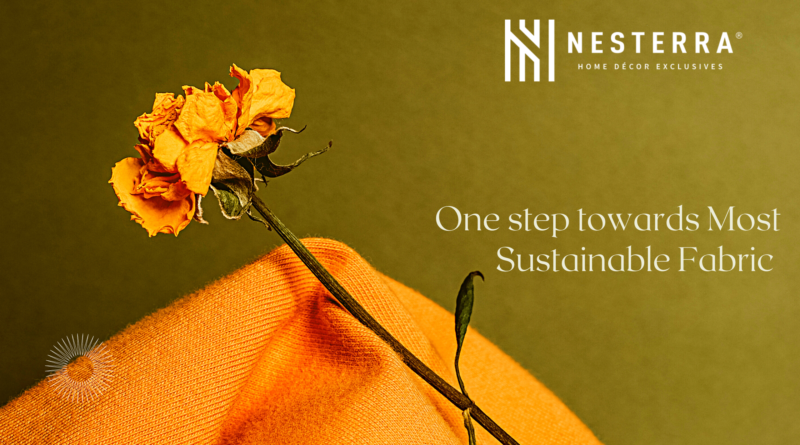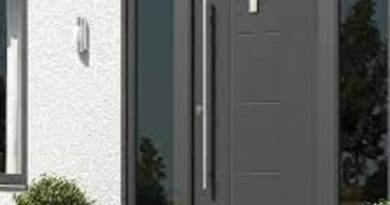One step towards Most Sustainable Fabric
As the world is becoming more aware of the need to protect the environment, sustainable fabric texture is becoming increasingly popular. These fabrics come from sustainable materials, such as bamboo, organic cotton, and hemp, grown without harmful pesticides or chemicals. Sustainable fabric patterns are not only better for the environment, but they are also softer and more durable than traditional fabrics.
With the growing popularity of sustainable fabric patterns, more and more companies are beginning to offer them. However, sustainable fabrics can sometimes be more expensive than traditional fabrics. For this reason, it is important to research before purchasing sustainable fabrics to ensure you are getting a good deal. If you are looking for affordable, sustainable fabric shopping, connect with Nesterra.
How can you define a sustainable fabric?
A sustainable fabric pattern incorporates sustainable production methods, emphasising environmental stewardship. Sustainable fabrics come from natural or recycled materials and are durable and reusable. These fabrics find great use in clothing, home furnishings, and other applications where their eco-friendly properties are advantageous.
Here are five reasons why sustainable fabrics are needed now more than ever:
- 1. To reduce our environmental impact– Sustainable fabrics require less water and energy to produce than conventional fabrics. They also generate less pollution and waste.
- To support farmers and workers– Sustainable fabrics are often made from materials grown or produced locally. It helps to support farmers and workers in the community.
- To create jobs– The production of sustainable fabrics creates jobs in the community.
- To improve our health– Sustainable fabrics hail from natural materials free from harmful chemicals. It can improve our health and well-being.
- To save money– One can use sustainable fabrics more than once. It can save you a good amount of money in the long run.
Let’s now introduce you to the 7 most sustainable fabrics that you can use to move towards a more sustainable lifestyle-
Organic linen
Organic linen is a sustainable fabric made from flax plants that are grown without the use of synthetic pesticides or fertilisers. Linen is a durable and strong fabric that gets softer with each wash. It is also hypoallergenic and antibacterial. Organic linen is a natural choice for eco-conscious consumers looking for a sustainable fabric.
Organic hemp fabric
Organic hemp fabric is a sustainable fabric made from the hemp plant’s fibres. The hemp plant is a fast-growing, drought-resistant plant that does not require pesticides or herbicides. Hemp fabric is durable and has a high resistance to mould and mildew. It is also breathable and absorbent, making it a comfortable fabric to wear. Hemp fabric is a good choice for sustainable clothing because it is biodegradable and requires less energy and water than other fabrics.
Organic cotton
Organic cotton is the most sustainable fabric because it consists of natural materials grown without toxic chemicals or pesticides. It means that organic cotton is better for the environment and for the people who work with it. Organic cotton is also more durable than conventional cotton, so it will last longer and save you money in the long run.
Qmonos
Qmonos is a very sustainable fabric. It consists of bamboo, which is a highly renewable resource. Bamboo grows very quickly, so it doesn’t strain the environment. Qmonos is also very durable, so that it will last a long time. It is an incredible choice for anyone who wants to be more sustainable in their fashion choices.
Qmonos is a unique fabric that consists of organically grown materials. The fabric is extremely soft and comfortable, making it ideal for various clothing items. Qmonos is also environmentally friendly and does not contain any harmful chemicals.
Tencel lyocell
Tencel lyocell is a sustainable fabric that comes from wood cellulose. The wood pulp is sourced from sustainably managed forests and is processed using a closed-loop system that recycles water and chemicals. The resulting fabric is soft, absorbent, and long-lasting. Tencel lyocell is soft and silky, making it a popular choice for clothing and other textile products. It is also environmentally friendly, as its production uses less water and energy than other fabrics.
Pinatex
Pinatex is a very promising ecological fabric. There are many reasons why Pinatex is considered a sustainable fabric. First, it comes from a renewable resource – pineapple leaves. Second, it requires no additional farming land or water to produce, as the leaves are a by-product of the pineapple industry. Third, it is a durable and strong fabric that will last longer and need replacement less often. Finally, it is biodegradable and will not contribute to landfill waste.
Econyl fabric
Econyl fabric is made from recycled materials, making it a sustainable fabric choice. The recycled materials used to make This fabric are sourced from post-consumer products. By choosing Econyl fabric, you are helping to decrease the amount of waste in landfills and supporting the recycling industry.
Econyl fabric is durable and long-lasting; it will not need substitutes as often as other fabrics. It further reduces the environmental impact of the fabric, as fewer resources are required to produce it.
Recycled fabrics
Recycled fabrics are sustainably important because they provide an eco-friendly way to reduce waste, conserve resources, and save money.
Recycling fabrics helps to reduce waste because it prevents them from ending up in landfills. It also conserves resources because recycling fabrics takes less energy and water than it produces new ones. In addition, recycling fabrics can save money because it reduces the need to buy new fabrics. Using recycled fabrics is an ecological way to help the environment and reduce your impact on the planet.
Final words
The bottom line is that sustainable fabrics are the need of the hour. When you choose sustainable fabrics, you are choosing to show extra love to your environment. Sustainable fabrics help to reduce pollution, conserve resources, and protect wildlife. By making small changes in our everyday choices, we can make a big impact on the health of our planet. Also, when planning sustainable fabric shopping, don’t forget Nesterra.



